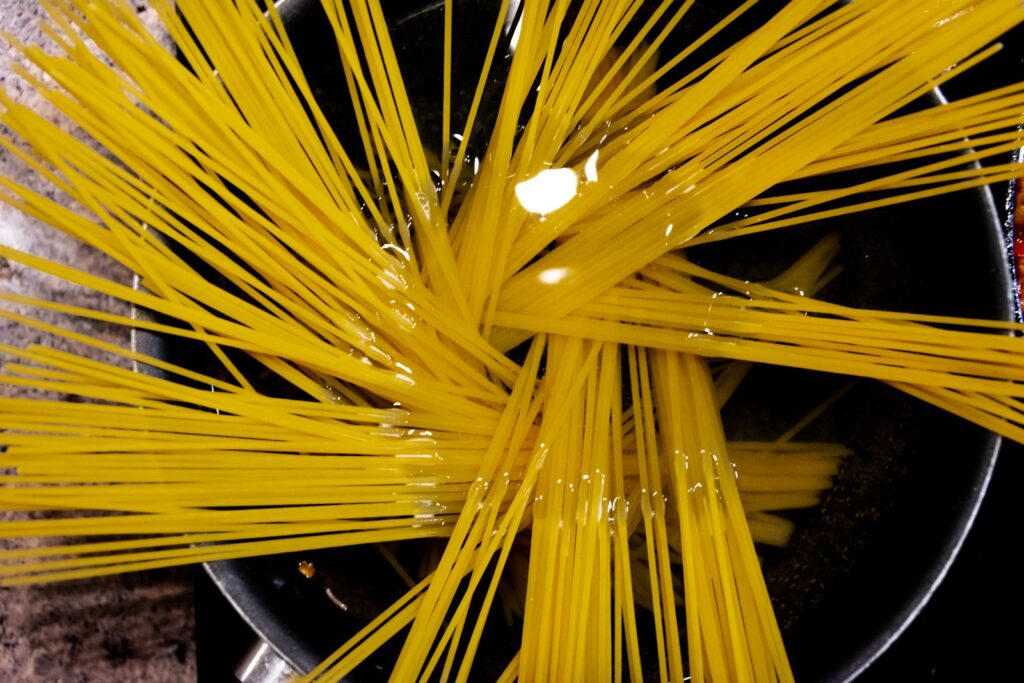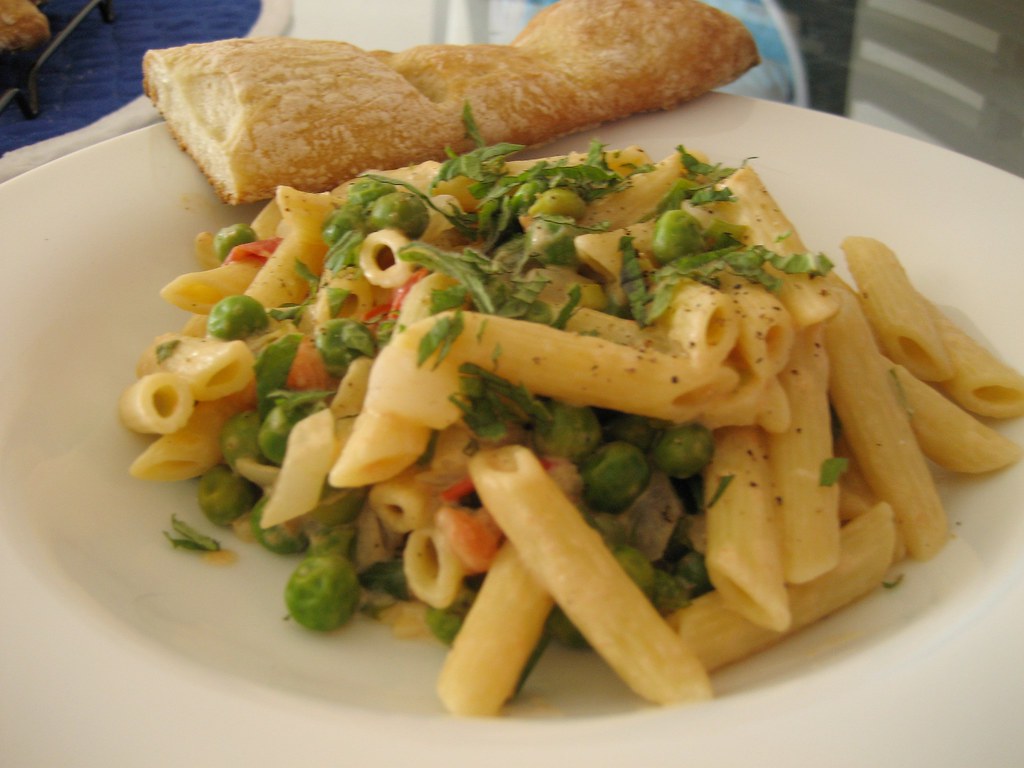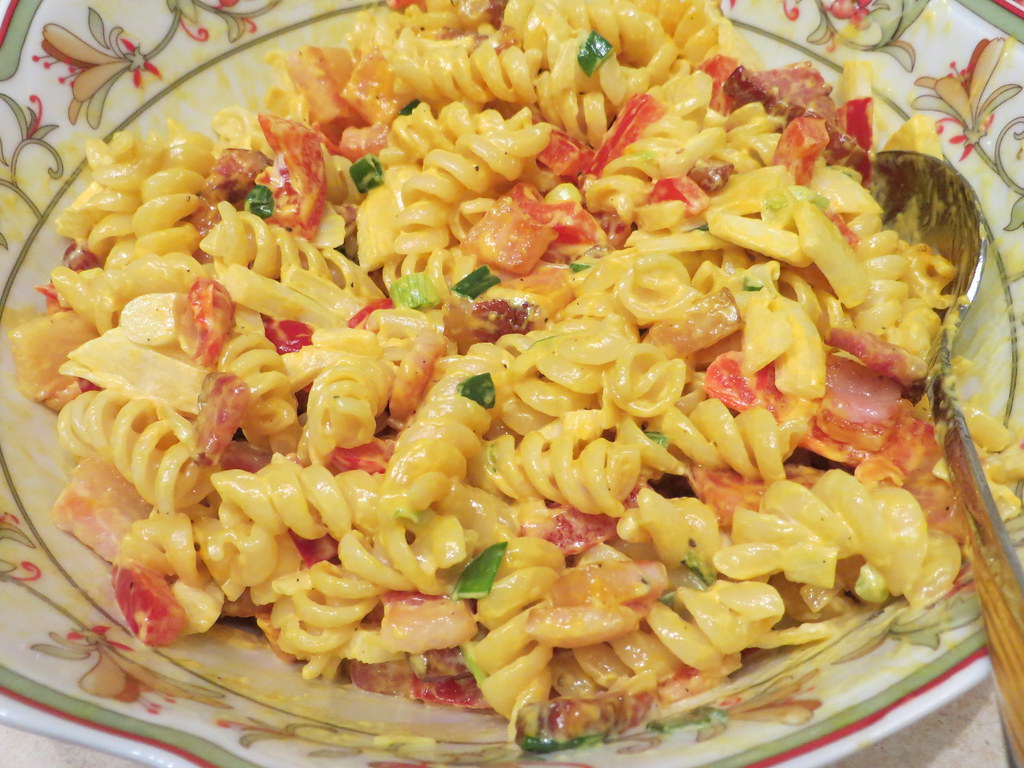With a wooden spoon in hand, I stand in front of a boiling pot, waiting for our pasta to become the ideal golden brown, or “al dente.” The word, which is highly valued by both chefs and foodies, refers to pasta that has been cooked until it is hard enough to bite into. However, I’ve found something delightfully controversial: I don’t like my pasta cooked al dente. This culinary confession may appear sacrilegious to some, but it is a truth based on several meals, one of which I recall dining at a very expensive Italian restaurant where, despite the good-tasting menu, the noodles failed to meet expectations. Although they were al dente, I didn’t like them. My taste may have been permanently influenced by the coziness of my mom’s softer pasta dishes, cooked ’til they’re an inch from mush – a stark contrast to the al dente ideal.
The Essence and Mastery of Pasta Making
Am I the only one that feels this way? This question awaited me, sending me on a hunt for answers and, maybe, some culinary courage.
The embodiment of pasta is not just its fixings or the sauce in which it is washed but also its surface. The Italians, pasta gurus, keep nothing chewy, an obstruction to the teeth that hints at the pasta’s ‘soul’ – a somewhat understated emphasis that demonstrates its ideal design. However, despite following recipes perfectly and, in any case, consulting experts on my quest for the ideal, the conclusion was clear: my heart (and stomach) desired pasta cooked slightly more. The tips will be shared below.

Ingredients
- 1 pound uncooked pasta
- A large (6- to 8-quart) pot
- Four to six quarts of cold water
- 1-2 tablespoons of salt
- A long-handled heat-proof spoon
- A colander for draining the pasta
The Cooking Steps:
- Bring the water to a full, rolling boil. Before adding the pasta, add salt to the boiling water. If you don’t season the cooking water, the pasta may taste flat — no matter how salty the sauce may be. The temperature of the water will drop once you add the pasta, so make sure the water’s at a full boil before adding the pasta noodles.
- Stir gently. Short pasta should be stirred immediately after adding it to water, but let spaghetti and long strands soften for a minute before stirring. Leave the pot uncovered while the pasta cooks.
- Cook your pasta at a rapid boil until it’s tender. The longer you cook pasta, the mushier it gets.
- Drain the pasta in a colander. Do not rinse the pasta with water.
Of course you also have the option of getting recipes from: https://www.allrecipes.com/article/pasta-cooking-basics/
During my research, I came across an interesting perspective on pasta planning. It turns out that the journey to still somewhat firm begins before the pasta even causes a commotion around town. A common mistake, it appears, is not providing the pasta enough room to move in the bubbling water. A confined pot draws out the bubbling system and uses the pasta to feed starch into a limited quantity of water, resulting in a sticky surface distinct from the still fairly hard excellent. This disclosure, shared by professionals and culinary experts such as Nicole Karr, underscored the importance of selecting the proper pot – a seemingly simple step that might represent the pinnacle of your pasta experience.
Perhaps the most significant example in my pasta process came from a deeper understanding of taste and surface. Overall, cooking is a personal journey shaped by memories, preferences, and the simple pleasures of sharing a meal. My road to still relatively firm was not about challenging a culinary standard, but about enjoying the diversity of flavor. Whether it’s still relatively firm, ‘al soft,’ or somewhere in between, the beauty of pasta resides in its ability to bring people together, spark conversations, and create new memories around the dinner table.
With respect to me, I’ve figured out how to embrace my inclination for gentler pasta, perceiving that it’s about the surface as well as the tales and solace each nibble brings. While my pasta could not necessarily be still somewhat firm, it’s constantly made with affection, prepared with recollections, and presented with a side of culinary freedom.

The Search for the Perfect Pasta
We should manage the nuts and bolts. The choice of pot, as culinary professionals and gourmet experts excitedly advise, is more than just a minor element; it is the cornerstone of pasta perfection. A constricted pot is a cardinal sin in the pasta world, resulting in uneven cooking and a sticky surface that may dampen the enthusiasm of even the most ardent pasta fan. Nicole Karr, a well-prepared culinary expert with extensive experience in both Northern Italian and New York City kitchens, recommends using a generously sized pot with a capacity of at least 6 quarts. She understands this isn’t only to accommodate the pasta but to allow it the space to cook evenly, ensuring that each strand travels freely in the bubbling water, accomplishing that ideal surface we as a whole desire.
In this culinary presentation, the water is portrayed as a person. It should be brought to a roaring, moving boil before the pasta makes its grand entrance. Salt it ‘like the sea,’ advise Karr and others in the culinary world, because this is more than merely preparing; it’s about enhancing the pasta’s innate taste, elevating it from basic sugar to a meal with soul.
When the spaghetti enters the scene, the clock and your faculties become your closest allies. Mixing occasionally during the most critical minutes prevents staying, demonstrating that scrupulousness can have a big impact. And, keeping in mind that the pasta box may provide timing guidance, Karr and other culinary gurus warn us that perfection comes from understanding when to follow the guidelines and when to let your instincts guide you. Taste as you go, for the surface you’re looking for may appear earlier or later than expected.

Moving beyond the specialist perspectives, we get at the essence of pasta making: the recognition that there is no one-size-fits-all system. Whether it’s the yet somewhat hard bite cherished by Italians or the gentler, more liberal surfaces valued by others, honoring your sense of taste is the true manifestation of culinary authority.
Mastering the perfect pasta is a journey rather than a goal. A conversation allows us to expand, adapt, and embrace the numerous options that this modest dish provides. With experienced knowledge and a drive to explore our own taste preferences, we learn that preparing the ultimate pasta dish requires more than just adhering to tradition. Now add water to the saucepan, let it bubble, and start cooking your own pasta. Who knows where it will take you?
Related posts:
*This* Is Why Your Pasta Is Never Quite Al Dente
What’s the opposite of the term al dente
An End to Al Dente: Lightly Cooked Can Be Exactly the Wrong Way to Taste Vegetables



